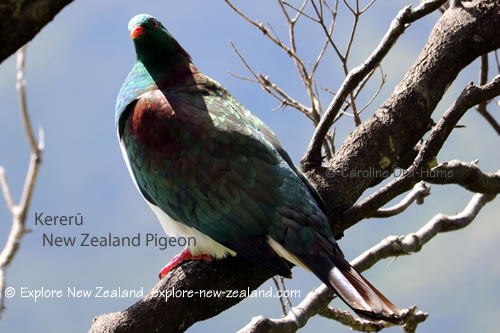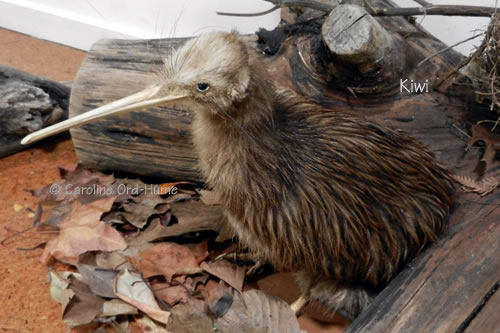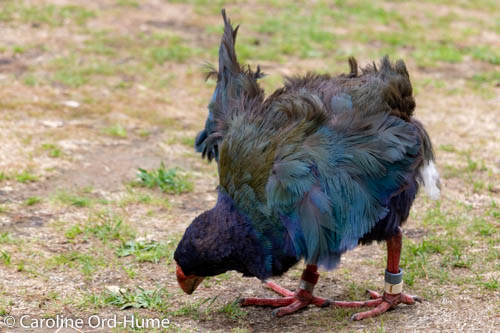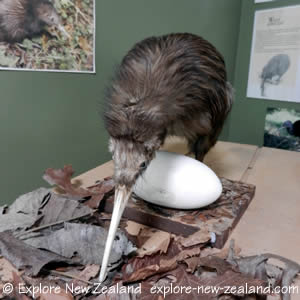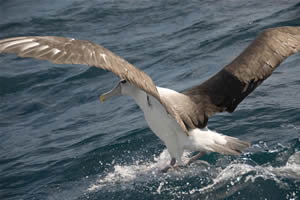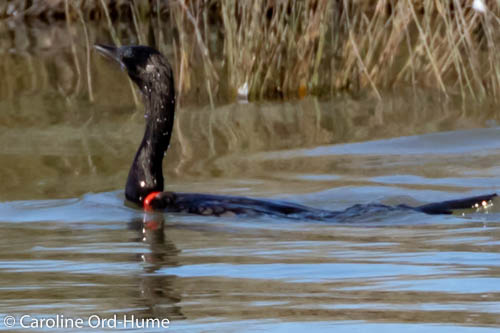- Home ›
- New Zealand Birds
New Zealand Birds: A Comprehensive A to Z List of Unique and Native Birds
Some species of New Zealand birds are completely unique and not found in any other countries.
Although there are no native mammals apart from bats and marine mammals such as dolphins and seals, New Zealand does have an abundance of unique native sea and forest birdlife that exist nowhere else on earth.
A list of birds in New Zealand is provided below.
Predators of New Zealand Birds
Before humans inhabited these islands, New Zealand did not have any predatory mammals.
Up until the arrival of predators the native birds were free to exist on the ground with many NZ bird species being completely flightless, and some birds even lost use of their wings through evolution. Thinking about it, if there were no predators to worry about why bother to carry on flying!
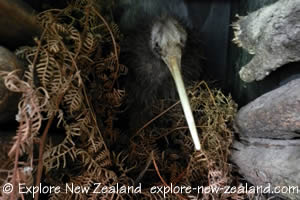
Introduced predators that threaten bird life include; cats, dogs, stoats, ferrets, possums, pigs, rodents, weasels, and hedgehogs. Most of these will kill adult or young birds, some eat eggs, and others compete for the same food that flightless birds such as the Kiwi need to survive.
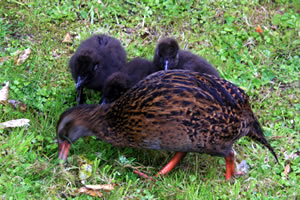
Weka with Three Young
In 2014 the Department of Conservation estimated that as many as 25 million native birds are killed by predators in NZ every year. That is an horrific number!
Read about the invasive introduced Predators of New Zealand
Unique New Zealand Birds
Native flightless bird South Island Takahē - Zealandia Urban Ecosanctuary
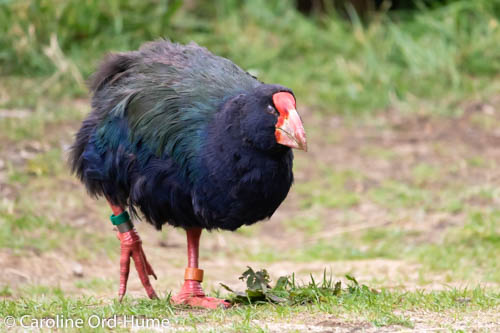
Unique New Zealand birds include the Kiwi with nostrils at the end of their beaks, the world's only flightless parrot called the Kakapo, and the only truly alpine parrot the Kea.
New Zealand is an important world resource for seabirds and is fortunate in having many unique species of forest birds. This is definitely a bird watching paradise and the bird songs coming from the forests are amazing.
Ecosystem
There is a diverse population of invertebrates that play a vital role in maintaining the ecosystem processes that enable many of the New Zealand native bird populations to survive.
It's very unfortunate that along with many of the native New Zealand birds species being under threat, many of the invertebrates also face extinction for similar reasons.
Bird Conservation in New Zealand
Some species, such as the Kiwi and Takahē, are only really able to be seen in protected and controlled environments and sanctuaries. There are a few sanctuaries that have successful breeding programme's for the Kiwi and it is great news every time another one is hatched out!
I believe that the Kekapo is far too rare to be on view anywhere at this point in time but the protection and breeding programme may change that. With the help of the Department of Conservation hopefully the survival of this bird will continue.
Due to the predatory animals that have been introduced to the islands since people arrived, such as rats, dogs, and cats, the survival rate of these flightless bird species is totally dependant on protection and bird rescue.
However, there are now several breeding programs and projects that have offered successful reintroduction to the wild of a variety of native New Zealand birds. Maungatautari Ecological Island Trust, Rainbow Springs in Rotorua, and Otorohanga Kiwi House, are examples of sanctuaries that I visited on my travels. An example of a predator free island in Wellington Harbour is Matiu/Somes Island, accessed by a short ferry ride.
Predators of New Zealand, including about the Predator Free 2050 target
New Zealand Bird Species
These are just some of the bird species you can expect to see in NZ.
Albatross / toroa - 17 species
Australasian bittern / matuku
Australasian crested grebe / kāmana, pūteketeke
Banded rail / moho pererū
Black billed gull / tarāpuka
Black-fronted tern / tarapirohe
Black Robin (Chatham Islands)
Black Shag / Cormorant - Kawau
Black Stilt / Kakī
Black Swan
Blue Duck (Little Duck / Whio)
Brown teal / pāteke
Chatham Islands Black Robin
Chatham Island oystercatcher / tōrea
Chatham Island pigeon / parea
Chatham Island tāiko
Chatham Island tūī
Chatham petrel / ranguru
Cormorant (Shag) - 12 species
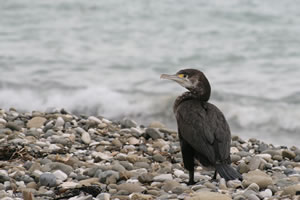
Black shag, Phalacrocorax carbo
Dabchick / weweia
Dinornis / Moa
Dotterel - New Zealand Dotterel / Tūturiwhatu
Duck / whio (Little Duck / Blue Duck)
Eastern bar-tailed godwit / kuaka
Fantail / pīwakawaka - New Zealand Fantail
Fernbird / mātātā
Fiordland crested penguin / tawaki
Grey warbler / riroriro
Hutton's shearwater / Kaikōura tītī
Kākā - large parrot belonging to the nestorinae meridionalis, including the Kea alpine parrot, and the extinct Norfolk Island Kaka.
Kākāpō
Kākāriki / Red-crowned parakeet
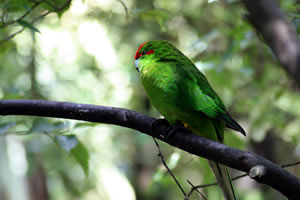
Kākāriki
Kererū, Kūkū or kūkupa / NZ Native Pigeon
Kingfisher / kōtare
Kōkako - The South Island species of these New Zealand birds is believed to have been extinct for more that 25 years
Kune Kune
Little penguin / kororā (Little Blue Penguin)
Little Black Shag / Cormorant / Kawau Tūi
Little Shag / Cormorant / Kawau Paka
Marsh crake / koitareke
Moa / Dinornis
Morepork / ruru
New Zealand Bush Falcon
New Zealand Dotterel / Tūturiwhatu
New Zealand fairy tern / tara iti
New Zealand falcon / kārearea
New Zealand Fantail Piwakawaka
New Zealand Native Pigeon / Kererū, Kūkū or Kukupa
New Zealand parakeet / kākāriki
New Zealand robin / toutouwai
New Zealand Royal Spoonbill / Kōtuku ngutupapa
Northern Royal Albatross / toroa
Oystercatcher (Variable Oystercatcher)
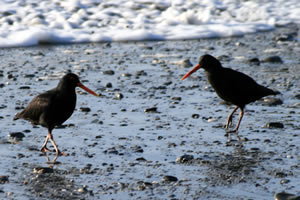
Oyster Catchers
Paradise duck / pūtakitaki / pūtangitangi
Penguin / Little penguin / kororā (Little Blue Penguin)
Penguin / Hoiho the Yellow-eyed Penguin - Penguins only saved from extinction by conservation efforts
Pied Shag / Kāruhiruhi- Cormorant
Pied Stilt
Pukeko / Pūkeko
Red Crowned Kakariki
Robin / toutouwai
Rock wren/tuke
Royal Albatross / toroa - Two species
Royal Spoonbill / Kōtuku ngutupapa
Sacred Kingfisher / kōtare
Saddleback / tīeke
Shag / Cormorant - List of 12 New Zealand Shag Species
Shore plover / tūturuatu
Silvereye or wax-eye
Southern Royal Albatross / toroa
Spotless crake / pūweto
Spur Winged Plover
Stitchbird / hihi
Sub-antarctic teal
Swan / Black Swan
Takahē - Thought to be extinct until Dr. Geoff Orbell re discovered this flightless bird with a red beak and multi coloured plumage in 1948.
Tern
Tomtit / miromiro
Torea / Variable Oystercatcher
Variable Oystercatcher / tōrea
Weka
Westland petrel / tāiko
Whio / Blue Duck
White-fronted tern / tara, kahawai bird, sea-swallow, swallow tail, black-billed tern
White heron / kōtuku
Whitehead / pōpokotea
Wrybill/ngutu pare
Yellow-eyed Penguin / Hoiho - This Yellow-eyed Penguin is actually the rarest out of all the penguins, right across the world, with not many more than 4,000 left, the majority of these penguins are located on New Zealand islands with more than six hundred pairs living on the south-eastern coast of NZ.
Yellowhead / mohua
For information on other animals that inhabit these islands please visit
New Zealand Animals and New Zealand Wildlife Parks
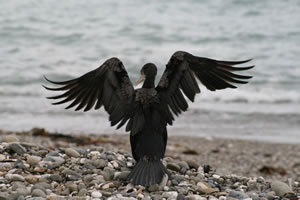
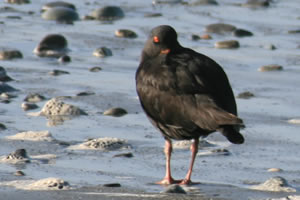
Nature Sounds and Bird Song New Zealand
Turn your sound up to listen to the above brilliant recording!
References
NZ Birds Online
https://www.doc.govt.nz
https://teara.govt.nz
